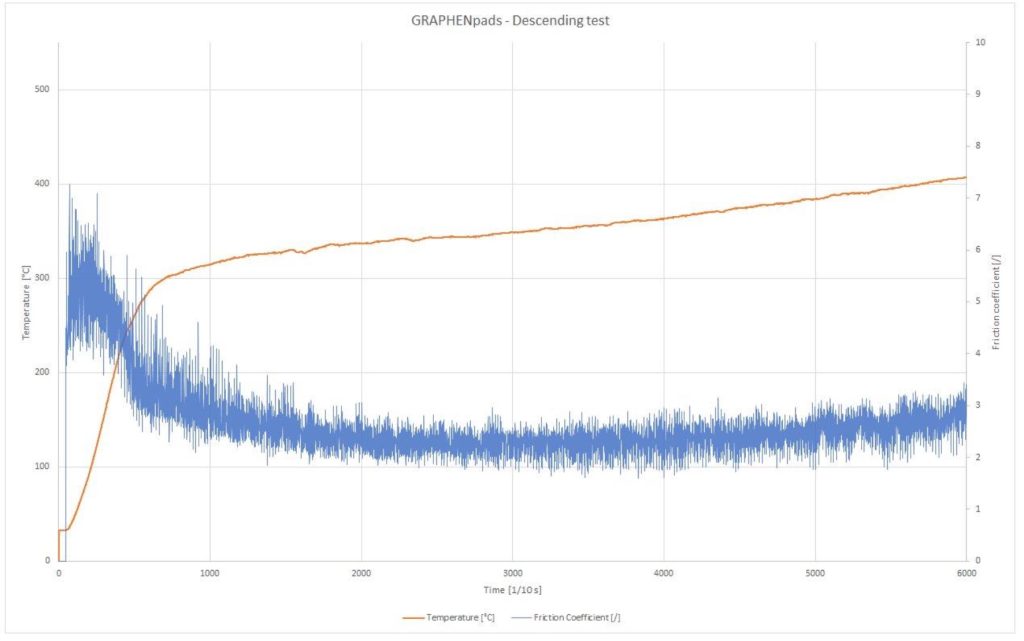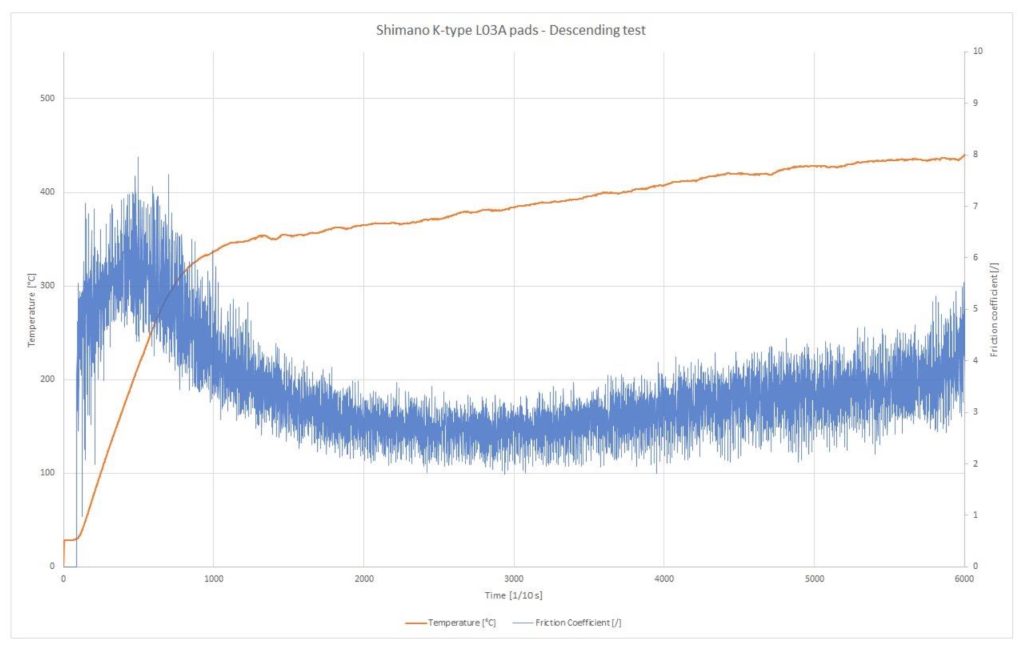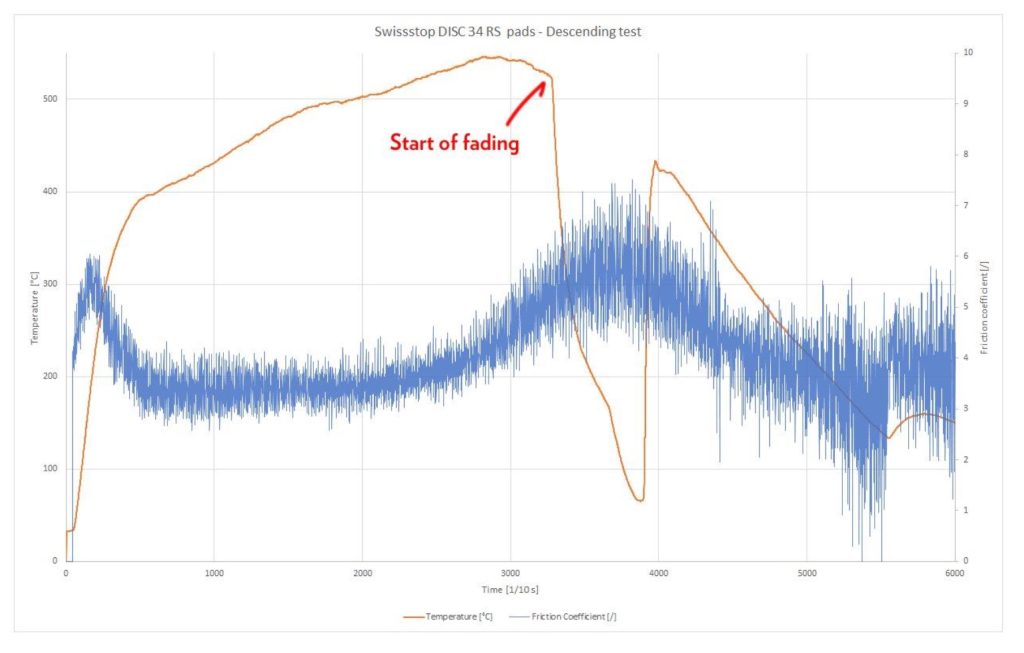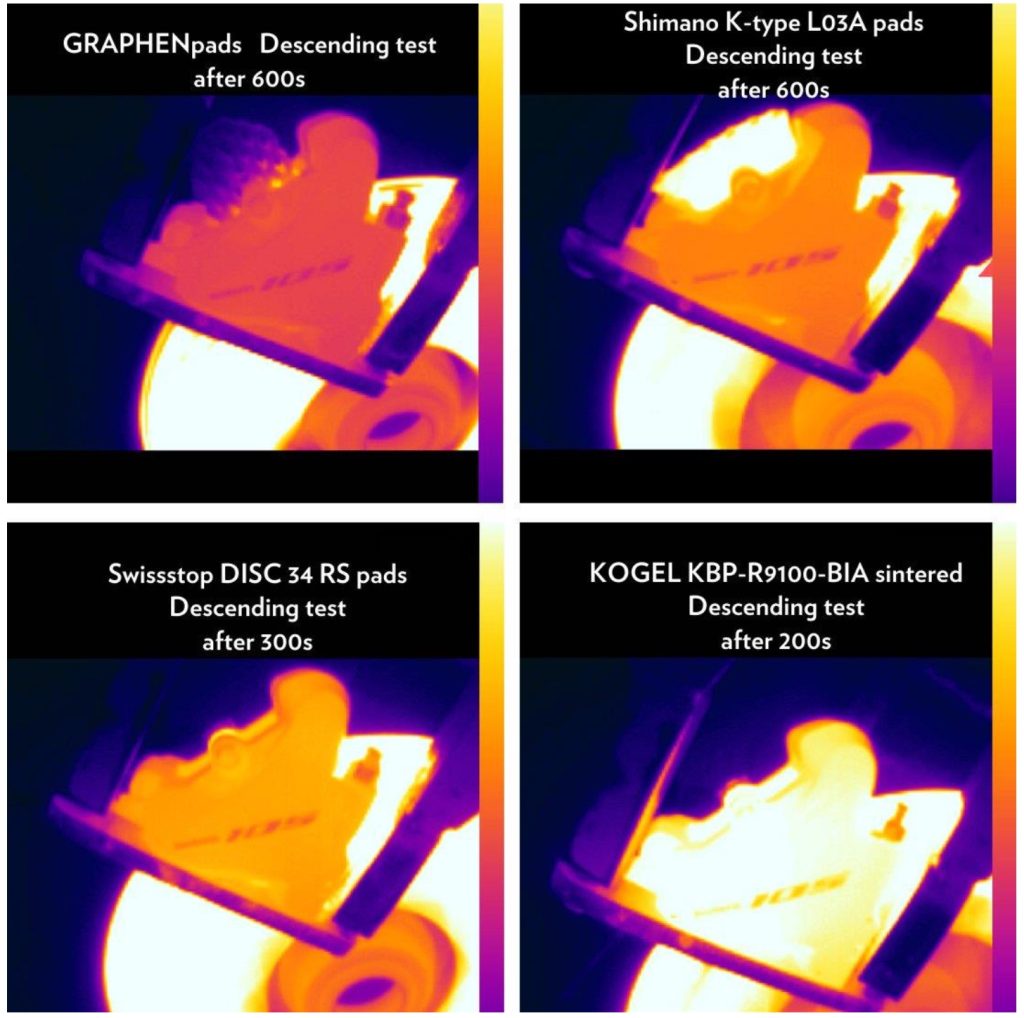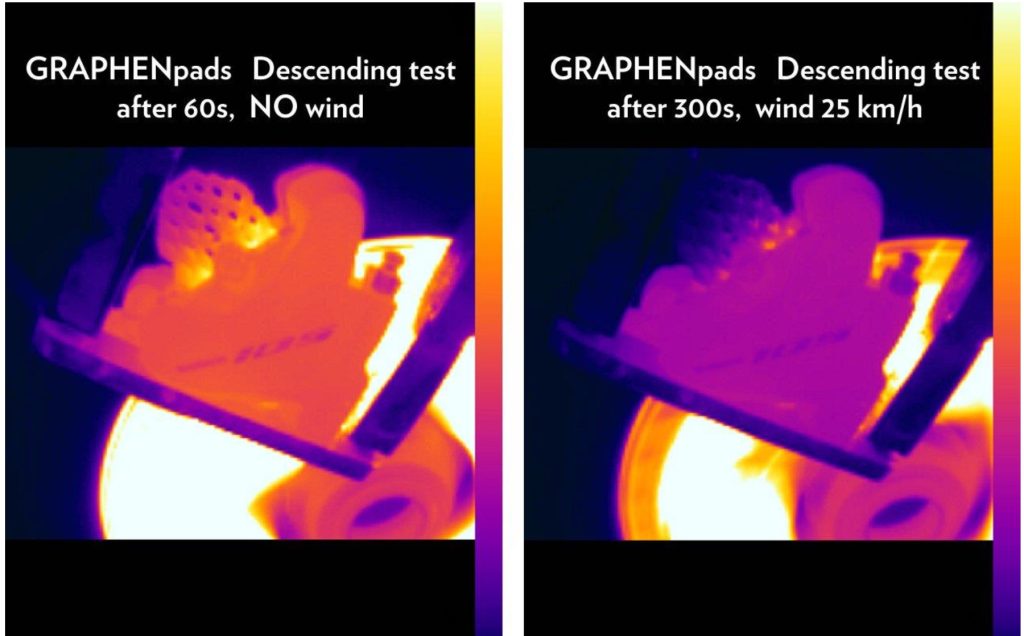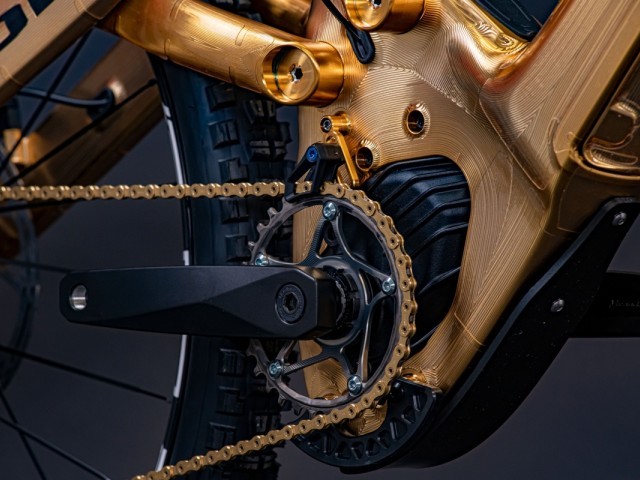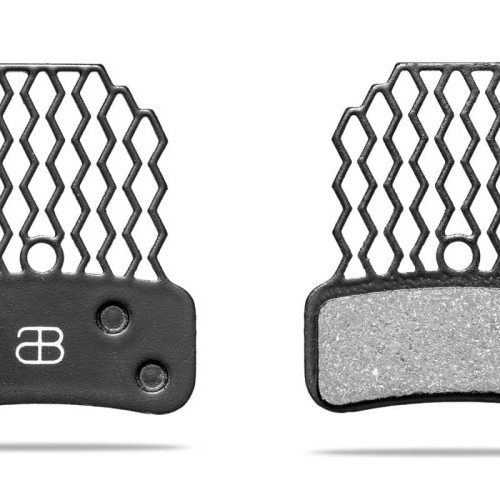
Absolute Black Launch HighTech Graphene Brake Pads
Wed 21st Sep, 2022 @ 3:30 am
 AbsoluteBlack, well known for revolutionising the chainring with their OvalRing technology, ventured into the world of brake optimization by launching a revolutionary brake pad using Graphene in order to drastically lower heat build up.
AbsoluteBlack, well known for revolutionising the chainring with their OvalRing technology, ventured into the world of brake optimization by launching a revolutionary brake pad using Graphene in order to drastically lower heat build up.
Brake pads are the single most important part of the bike, which determines how confidently you can descend. The key element to their optimum performance is to keep the temperature of the brake pads and the rotor as low as possible (ideally below 400C), especially on longer descends. The hotter the pads get, the faster they fade, which means they lose the ability to slow you down reliably when needed. Overheated pads lose braking consistency and behave differently each time you press the brake lever, which greatly diminishes your braking confidence, effectively making you ride much slower.
This is why Shimano introduced cooling fins to disc pads in attempt to lower their operating temperature.
The ideal brake pad will have the same predictable braking power, initial braking bite and perfect modulation throughout a long descend. After 3 years of development, we believe that we have achieved just that with our GRAPHENpads®. The results of the machine tests and thermal imaging show that we were able to reduce disc pad and rotor temperature by up to 35% vs competitors and completely eliminate brake fading.
GRAPHENpads® are a completely new benchmark for the braking pad industry thanks to our unique approach to the design of backplate cooling fins, bespoke backplate coating with graphene as well as a completely new friction compound, which uses specially modified graphene instead of toxic copper.
The key elements of GRPAHENpads®:
*First pads on the market containing specially modified graphene in their friction compound, which greatly improves braking performance, durability and heat transfer to the backplate.
* Thanks to the backplates being entirely covered in graphene heat dissipating coating, it was possible to achieve much greater heat transfer from the friction material to the cooling fins and at the same time, increase radiation of heat (IR spectrum) by over 20% (which is very significant).
* First pads in the market with patented, angled radiator fins for superior airflow and cooling. Angle cutting provides three major benefits. 1- increased overall surface of the radiator by 40% vs standard cutting methods. 2- significantly greater airflow compared to traditional radiators that increases convective heat dissipation 3 –most importantly, 45deg angle cutting makes all the surfaces radiate the heat away from the brake pad. Heat radiation (IR spectrum) is the highest in perpendicular direction to the surface so in a standard radiator, every fin is radiating its heat at a neighbouring fin, keeping more heat in the element. Our pads radiate all the heat away from the back plate.
* To date, GRAPHENpads® are the only brake pads in the market that completely eliminate toxic copper, ahead of new regulations (copper brake dust is proven to be toxic to aquatic life hence new California regulation will ban use of copper from 2025)
* They are produced in EU unlike majority of other pads on the market, which come from a single Taiwanese factory.
What you will feel:
* Predictability and power, allowing you to regain full control of your braking
* Better modulation and faster stopping
* Improved confidence when descending
* No brake fade, more consistency and reliable braking feel corner after corner, even on the most demanding descends.
* They are very quiet, even during long descends.
* They reduce fatigue of your hands due to greatly reduced brake lever force needed to achieve powerful braking compared to competition.
Why the majority of pads have similar average performance
The great majority of popular organic disc pads on the market are produced by just one Taiwanese company. Interestingly, they don’t develop braking compounds themselves but instead, source such formulas from elsewhere. Anyone can pick their braking compound from a short catalogue, then pick a color of the backing surface and just like that, they’ve created their own brand of braking pads.
GRAPHENpad’s friction compound on the other hand, was developed with help from renowned European disc pads specialist with decades of experience and one-of-a-kind equipment, that allows for precise performance testing. Graphene is still a very new material, especially in friction brake compounds. Due to its very unique properties and years of testing, we were able to develop a friction material like no other. In the automotive industry, where every major car maker has already filed several patent applications for friction compounds containing graphene, it’s clear to see that it is the future of braking pads. New regulations which start from 2025 will prohibit the use of copper powder in disc pads. Graphene is not only an excellent substitute to copper, but a major upgrade in
terms of performance. We are the first company in the bicycle industry offering graphene in the friction compound.
Descending test
In this testing sequence lasting 600s (10 min) and using a one-of-a-kind machine, we performed a simulation of a long descent on a road bike, with a constant force of 10N on the brake lever and slope angle of 12,5%. Velocity was 25km/h (15.5mph) with air blowing on the braking system at the same speed. Key parameters were recorded at 0.1s interval (6000 points per test). We used Dura- Ace Icetech rotors. This test helps us to understand how the brake system and friction material behaves during longer periods of braking and when the brake is subjected to fading.
In simple words we simulate a 100kg (220lbs) rider+bike gently dragging their brakes all the way down the descend. It is a typical behaviour for unexperienced riders when descending in alpine terrain.
We have compared GRAPHENpads to Shimano K-Type L03A (Dura-Ace), Swissstop Disc 34 RS and Kogel R9100 BIA pads. In every brake pad test we have used a new Dura-Ace rotor, new 105 caliper and new brake oil. Those control measures are important as once the caliper reaches over 450C, its seals sustain permanent damage and decomposition of braking fluid can occur. When temperature of the caliper goes above 500C, aluminium core in the rotor starts to soften, causing permanent deformation of the braking surface. Each test was conducted following a standardised bedding-in process of the brake pad-rotor pair, with automated cycle of 100 braking events in dry, 30 in wet, 30 in dry conditions and various, pre-set intensities. Then we let the system to cool down to ambient temperature and dry out before main test.
Our machine tests and thermal imaging show that with GRAPHENpads® (Graph 1), it is possible to reduce disc pad and rotor temperature by up to 35% vs competitors and completely eliminate brake fading. It is also worth noting that friction coefficient remains very stable, which translates to very predictable and consistent braking performance.
From thermal imaging we can observe that GRAPHENpads® were able to significantly reduce brake caliper temperature vs other brake pads, which translates to increased performance and prolonged life of caliper seals and braking fluid. (On images dark violet represents temperatures of around 27C and “white” represents over 400C ).
You can learn more about development and testing from this video: https://vimeo.com/745738744
Why cooling fins are the critical part of brake cooling ability.
In order to explain how important the disc pad fins are to overall disc brake cooling abilities, first we need to understand what is the most important factor that helps the brake calliper, rotor and pads to cool down. Air moving past all braking elements during the ride, plays this crucial role. Increasing the surface of disc pad backplate enables more exposure to wind hence improves cooling. The cooler the pads, rotor and calliper, the better the braking performance.
In the thermal images below, you can see GRAPHENpads® tested with and without air blowing on the test setup. It is clear that without the wind, even the best brake pads start overheating very fast, showing how significant role cooling fins play in overall temperature management and braking performance.
But graphene is used in super low friction lubricant…
In order to understand why graphene is such a good material for friction compound, one needs to understand how friction compound is made. Typical organic friction compound includes five classes of components: a fibrous material made from inorganic/organic/metallic fibers (like copper), a binder (like thermosetting polymer), a “filler” (various soft ceramic powders), one or more lubricants/friction modifiers (like graphite, copper), one or more abrasives (hard ceramic powders). The binder, which is typically a phenolic resin that bonds all components together, has a very high friction coefficient, therefore it is necessary to add friction modifiers/lubricants to lower the friction coefficient and allow braking modulation. Copper is a great example of a material that not only acts
as fibrous material but it is also a lubricant and conductor of heat to the backplate. Graphene on the other hand is several times stronger than copper, conducts heat 3-6 times better and its coefficient of friction is several orders of magnitude lower. By eliminating copper and finding the right balance of graphene and other components, we created one-of-a-kind friction material that delivers extraordinary performance.
GRAPHENpads® will be offered in 4 models
Disc 34 – For Shimano Dura Ace and other models
Disc 35 – For Sram eTap AXS and other models
Disc 27 – For Shimano XTR and other models
Disc 31 – For Sram G2 and other models
Disc 15 – For Shimano Deore and other models
Disc 34 & 35 have angled cooling fin cutting structure, graphene coating and graphene performance ROAD friction compound
Disc 27 & 31 have straight fin cutting structure, graphene coating and graphene endurance MTB friction compound
Disc 15 has no fins due to caliper limitations, graphene coating and graphene endurance MTB friction compound
Disc 34 & 35 pricing: 62.99$ , 49.99gbp, 59.99eur
Disc 27 & 31 pricing: 49.99$, 39.99gbp, 47.99eur
Disc 15 pricing: 37.99$, 29.99gbp, 35.99eur
Disclaimer:
The photos are not altered. Special 45deg angle cutting of our fins produces really thin fin structures when looking from 45deg angle. However, when looking from the 90deg angle (perpendicular to brake pad surface) or -45deg they appear to be much thicker. Cutting at such an angle adds 40% more surface than normal 90deg cutting hence the appearance.
Graphenpads® is a registered trademark of absoluteBLACK®. GRAPHENpads® design is protected by several design patents and several patent pending applications.


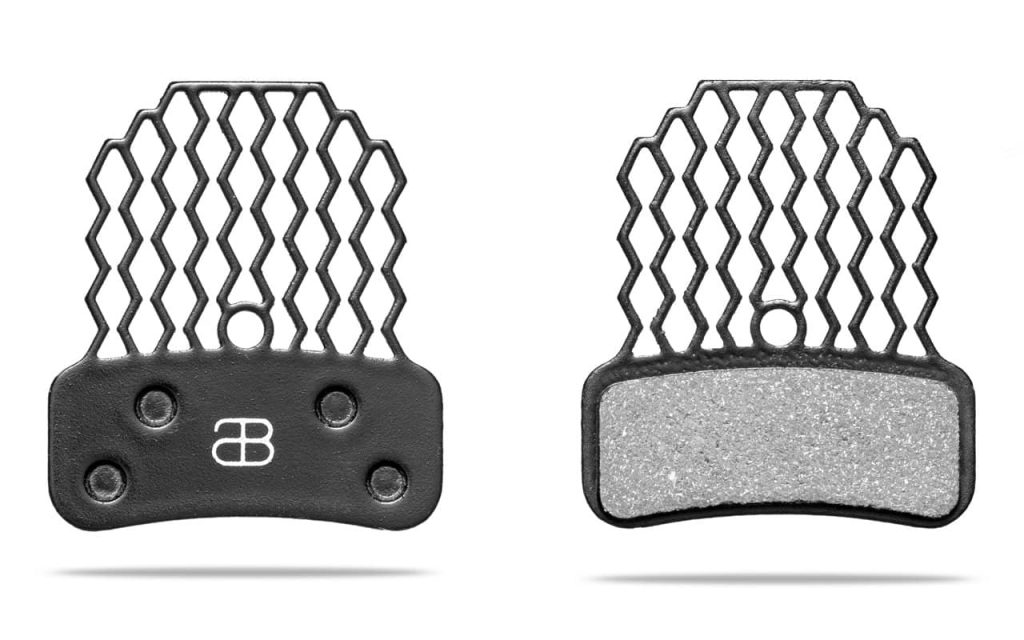 AbsoluteBlack, well known for revolutionising the chainring with their OvalRing technology, ventured into the world of brake optimization by launching a revolutionary brake pad using Graphene in order to drastically lower heat build up.
AbsoluteBlack, well known for revolutionising the chainring with their OvalRing technology, ventured into the world of brake optimization by launching a revolutionary brake pad using Graphene in order to drastically lower heat build up.